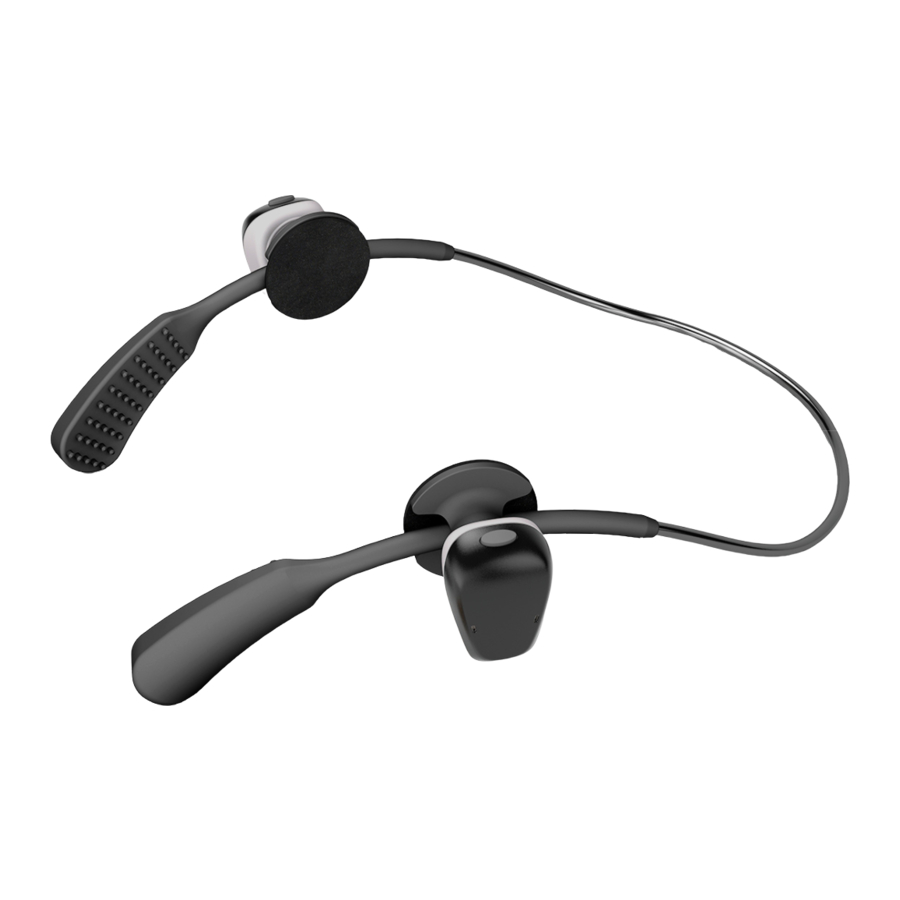
Cochlear Baha SoundArc Frequently Asked Questions
Hide thumbs
Also See for Baha SoundArc:
- Instructions for use manual (40 pages) ,
- Fitting quick manual (2 pages) ,
- User manual (9 pages)
Advertisement
Quick Links
Frequently Asked Questions
Baha
SoundArc FAQ
®
Performance and Use
1. What materials are used in the Baha
The materials used are tested to be biocompatible and are not
made of natural rubber latex. The band is made of stainless
steel with a polyamide nylon coating, the Connector disc is
made of aluminum and the tips are made of 100% silicone.
2. Which sound processors can be used
with the Baha SoundArc?
The Baha SoundArc is compatible with all Baha 5 sound
processors: Baha 5, Baha 5 Power and Baha 5 SuperPower.
The choice of sound processor depends on the patients'
hearing thresholds which should account for both skin and/
or transcranial attenuation. All devices that are compatible
with the Baha Softband are compatible with Baha SoundArc
because of the snap coupling connection. However, legacy
sound processors (Baha 4 and older) have not been validated
for use with Baha SoundArc.
3. How does Baha SoundArc performance compare with
the other non-surgical clinical demonstration tools?
Baha SoundArc has the equivalent sound transmission and
feedback performance as Baha Softband. Compared to
Headband and Testband, the Baha SoundArc shows improved
sound transmission and feedback performance. Baha SoundArc
is optimized for use with Baha 5 sound processors. The design
of the Connector disc, allows a larger area to get in contact
with the skin improving sound transmission performance.
SoundArc?
4. What is the optimal placement
®
for the Baha SoundArc?
The Baha SoundArc should have the steel band placed against
the back of the head above, but not resting on, the ears. The
Connector disc with Baha SoftWear™ Pad should sit flush
against the skin and be placed securely on the sleeve of the
silicone tip. It should not rock or wobble when the processor
is in place. Feedback may occur if placed too close to the ear.
The optimal placement of the Connector disc may vary due
to differences in patient head shapes. Consult the Professional
Quick Fitting Guide for further information on how to fit the
Baha SoundArc to patients.
5. What sizes of Baha SoundArc are available?
What is the most common size?
The Baha SoundArc comes in five different sizes (Extra Small,
Small, Medium, Large, and Extra Large). Market research
shows that medium is most common size for adults, and
small is common for young children.
6. Do I have to use the Baha SoftWear Pad
with the Baha SoundArc?
Yes. The Baha SoftWear Pad improves sound transmission
and distributes the contact pressure over a larger surface area,
minimizing the effect of peak pressure. It should always be
used when wearing Baha SoundArc.
Advertisement

Summary of Contents for Cochlear Baha SoundArc
- Page 1 The materials used are tested to be biocompatible and are not made of natural rubber latex. The band is made of stainless The Baha SoundArc should have the steel band placed against steel with a polyamide nylon coating, the Connector disc is the back of the head above, but not resting on, the ears.
- Page 2 The Baha SoundArc should be fit so that the hair can mean Baha SoundArc is easily retained, but may need...
- Page 3 Connector disc. The disc smaller size of the Baha SoundArc. If there is a gap between should begin to spin or slide freely. When the disc is placed...
- Page 4 ©Cochlear Limited 2017. All rights reserved. Hear now. And always and other trademarks and registered trademarks are the property of Cochlear Limited or Cochlear Bone Anchored Solutions AB. The names of actual companies and products mentioned herein may be the trademarks of their respective owners.





Need help?
Do you have a question about the Baha SoundArc and is the answer not in the manual?
Questions and answers
does midwest ent and allergy in sioux falls sd 2315 w 57th st sell baha sound arc? lost hearing in left ear, i want nonserigal sound arc like on internet. they acted like they had never heard of it. are they trying to sell me the soft band or do surgery with bone connection instead? how can i locate an audiologist in mn who is happy to sell me a baha sound arc? i tried the soft band at midwest ent, however it would feel uncomfortable after a while, i had a mastoidectomy on ear 50 years ago, not interested in surgery. the risks i do want to contend with. i want to get a baha sound arc, guess i will just have to live with single sided deafness.